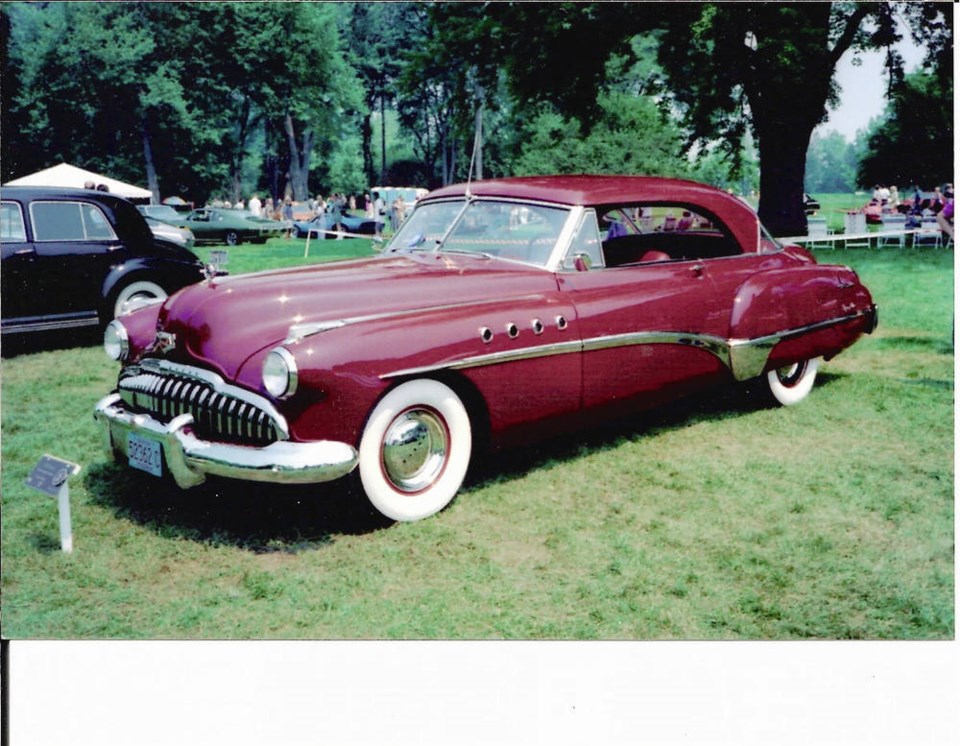Buick has been a respected and proud member of the General Motors family since the establishment of GM more than 110 years ago. It’s an amazing feat considering the number of other brands that have come and gone. Buick was, in fact, GM’s foundation marque.
In 1908 carriage millionaire William (Billy) Durant established GM as a holding company. He already controlled Buick, so he used it as the brand on which to build the corporation by adding such nameplates as Oldsmobile, Cadillac and Oakland (later Pontiac).
Buick had distinguished itself from the beginning with its powerful overhead valve, then called valve-in-head, engine. Over the years it established a reputation as a good performing quality upscale car popular with buyers such as doctors, bank managers and business leaders. One of Buick’s most memorable and attractive models came in 1949.
Following the Second World War’s 3 1/2-year interruption in car production, in 1945 Buick and other automakers returned to building models that were slightly revised 1942 designs. Buick had a head start because it had begun redesigning its cars in 1942.
Most all-new Big Three (GM, Ford and Chrysler) post-war styling, including Buick, appeared in 1949, although Buick’s entry level Special didn’t get rid of its old design until mid-year and arrived as a 1950 model.
The newly restyled 1949 Buick line consisted of the Super and Roadmaster. Their appearance was more integrated featuring front fenders that formed an integral part of the body. They ran straight and level from front to rear where they blended into the rear fenders.
There were still fastback and notchback bodies, and all vestiges of running boards were gone. The vertical-bar grille was lower and now extended right across the front of the car for a more massive appearance. Glass area enlarged by 22 per cent gave increased visibility.
All Buick’s were powered by the smooth running overhead valve, straight-eight engines it had used exclusively since 1931. They were now mounted on new low-vibration engine mounts, and for 1949 these “Fireball” eights came in two versions: 4.1 litre (248 cu in.) 110 horsepower in the Special and Super, and larger 5.2 litre (320 cu in.) 150 horsepower for the Roadmaster.
The standard transmission was a column-shifted, three-speed manual, but in 1948 Buick Roadmaster had introduced its “Dynaflow” automatic with a two-speed planetary gearset and torque converter, the first American car to use one.
Optional on Roadmasters that year, it became available on the Super for 1949. Dynaflow offered clutchless driving at the expense of poorer fuel economy and leisurely acceleration. Britain’s The Motor magazine recorded zero to 60 mph (97 km/h) in a long 23.2 seconds.
When the testers resorted to starting in low gear and manually shifting to Drive at 30 mph (50 km/h) the zero to 60 (97) time dropped to 21.1 seconds, an improvement but still slow.
The acceleration was sluggish because in fully shiftless mode the transmission started off in Drive, or high gear, and depended on the torque converter alone instead of gears to provide torque multiplication. There was too much slippage, and inadequate torque multiplication for decent performance.
Buick’s most discussed new styling feature for 1949 were its “Venti-ports,” quickly dubbed portholes by the public. Located in the front fender their initial purpose was to bleed hot air off the engine, and for the first part of the model year they had vent pipes to the engine.
It soon became evident that portholes were not required for cooling but were kept as a styling mark. They became an instant identifier of whether you had the Super or the “four hole” Roadmaster that gave Roadmaster owners instant cachet. Portholes in various forms remained a Buick styling feature almost continuously into the 1980s, and after an interruption, sneaked back in 2003 on the Buick Park Avenue Ultra.
Another styling breakthrough for Buick, Cadillac and Oldsmobile was the pillarless hardtop, popularly called the “hardtop convertible.” Eliminating the thick centre or B-pillar, gave the two-door, top model Buick Roadmaster Riviera Hardtop Coupe the appearance of a convertible with the top up.
Company lore, which may be apocryphal, is that Buick’s assistant chief engineer’s wife liked the convertible look but always kept the top up because the wind mussed her hair. Her husband reportedly took the story to work and the hardtop convertible soon appeared in the Buick line.
Hardtop convertibles provided closed car comfort with the appearance of a convertible and became popular throughout the industry.
They would extend to four-door cars in 1955 Oldsmobiles and Cadillacs, and last through to the 1970s.
The 1949 models were good for Buick and it sold almost 400,000 of them in the calendar year. It was an attractive and popular car that helped GM retain its predominant industry sales leadership position.



